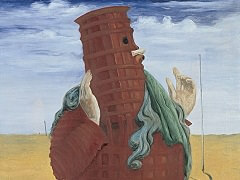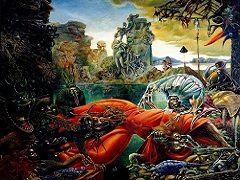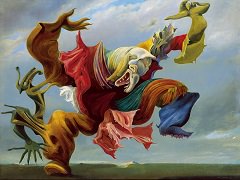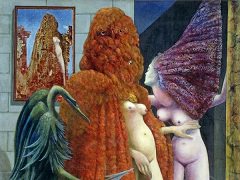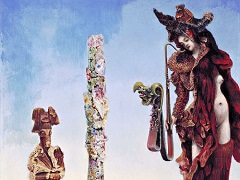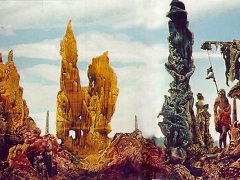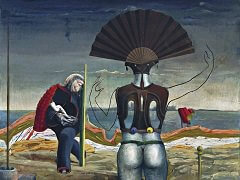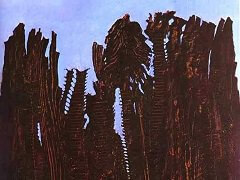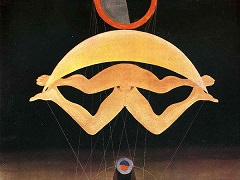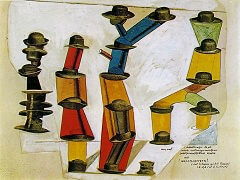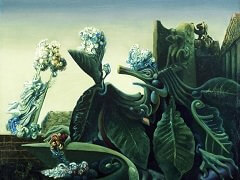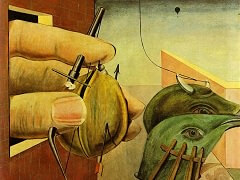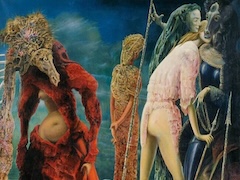The Elephant Celebes, 1921 - by Max Ernst
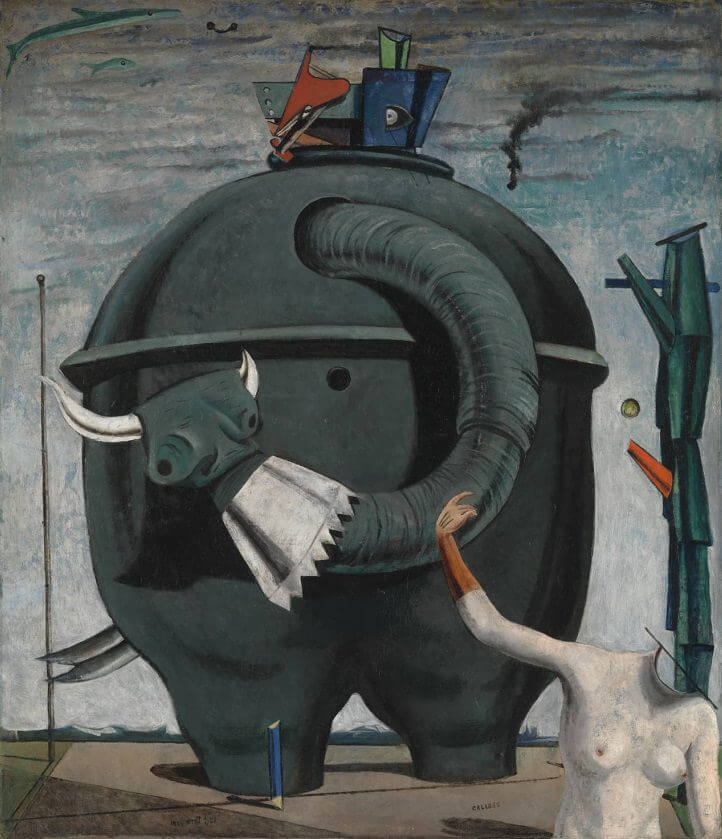
The Elephant Celebes was painted in Cologne in 1921 and was Max Ernst's first large picture. It was bought shortly after its completion by his friend the poet Paul Eluard and later passed
from him to Sir Roland Penrose, who owned it until 1975 when he gave it to be sold for the benefit of the Institute of Contemporary Arts. In this painting Ernst has used his earlier university
studies in psychology and philosophy, in which he became familiar with the writings of Friedrich Nietzsche and Sigmund Freud, to provides the basis
for a pictorial exploration of the irrational subconscious.
This painting grew directly out of Ernst's use of collage from 1919 onwards to produce bizarre combinations of images, though no preliminary collages or sketches were made for it. The idea of the
painting appeared spontaneously on the canvas with few alterations as it progressed.
The boiler-like monster to which the title refers is, like the rest of the painting, highly ambiguous. It has a horned head with apparently sightless eyes, but a pair of tusks projecting on the left
suggests the possible presence of a second head (or perhaps the real head?) on the other side. Its neck seems to consist of a long snake-like coil which emerges from a hole in its upper section;
the top is surmounted by a brightly-coloured construction containing a mysterious eye. It seems to be standing in a large open space, but there are also indications that it is embedded in a solid b
ackground, while two fishes swim in the sky above. Three upright objects stand around it, while in the bottom corner a headless mannequin figure with a raised arm appears to be beckoning the monster
towards it.
As was first noted by John Craxton and subsequently confirmed by Ernst himself, the image of the boiler-like form on its pair of 'legs' was originally inspired by an illustration in an English
anthropological journal of a huge communal corn-bin peculiar to the Konkombwa tribe of the southern Sudan. The photograph is taken from the same angle and is basically very similar, but the artist
has given the hollow clay container a metallic appearance and changed its character completely by adding the various appendages described above.
Ernst also revealed to Sir Roland that the title 'Celebes' was taken from some scurrilous couplets popular among German schoolboys which run as follows:
Der Elefant von Celebes
Hat hinten etwas gelebes
Der Elefant von Sumatra
Der vögelt seine Grossmama
Der Elefant von Indien
Der kann das Loch nicht findien
(The elephant from Celebes
has sticky, yellow bottom grease
The elephant from Sumatra
always fucks his grandmamma
The elephant from India
can never find the hole ha-ha)
There are various light-hearted scribbles on the back of the canvas of caricature-like figures and animals, which mostly seem to have no connection with the painting on the other side. However Mrs Gabrielle Keiller has noted that they include two figures holding what appear to be golf clubs (confirmed by the word 'GOLF' written beside them) and being observed by a grotesque head with a balloon coming from its mouth containing the words 'HA HA' - possibly an allusion to the last verse of the rhyme.
Along with Persistence of Memory by Salvador Dali, The Elephant Celebes has become the most iconic images of Surrealism Movement.


